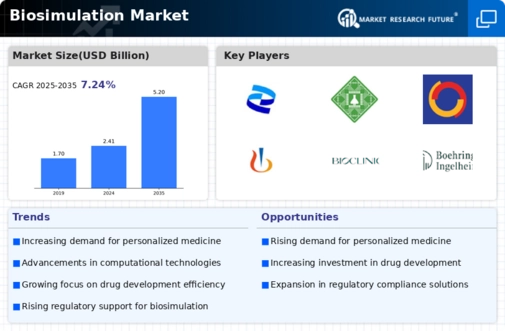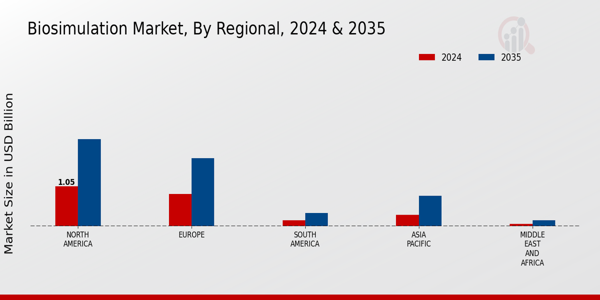Market Share
Biosimulation Market Share Analysis
In the dynamic landscape of the biosimulation market, companies employ various strategies to position themselves competitively and capture market share. One prevalent approach is differentiation, where companies highlight unique features or capabilities of their biosimulation products or services. For instance, a company might emphasize the accuracy of its simulations or the comprehensiveness of its modeling techniques compared to competitors. This strategy aims to carve out a distinct niche in the market, attracting customers who prioritize specific attributes.Another strategy involves cost leadership, wherein companies focus on offering biosimulation solutions at lower prices than their competitors. By minimizing production costs or optimizing operational efficiency, these companies can pass on savings to customers, potentially capturing market share from price-sensitive segments. However, maintaining profitability while pursuing this strategy requires careful cost management and scale advantages.
Furthermore, some companies pursue a focused differentiation strategy, targeting specific customer segments or applications within the biosimulation market. By tailoring their products or services to meet the unique needs of these segments, companies can establish themselves as experts in particular areas, fostering customer loyalty and gaining a competitive edge. For example, a company might specialize in biosimulation software tailored specifically for drug development or environmental risk assessment, catering to the distinct requirements of these sectors.
In addition to differentiation and cost leadership, innovation plays a crucial role in market share positioning within the biosimulation industry. Companies that invest in research and development to continually improve their products or develop novel solutions can gain a competitive advantage. By introducing cutting-edge technologies or pioneering new simulation methodologies, these companies can attract customers seeking the latest advancements and stay ahead of competitors.
Moreover, strategic partnerships and collaborations are instrumental in expanding market share in the biosimulation market. By teaming up with complementary companies or research institutions, companies can leverage shared resources, expertise, and networks to enhance their offerings and reach a broader customer base. Collaborations also enable access to new markets or technologies that might be otherwise challenging to penetrate independently, strengthening companies' competitive positions.
Another critical aspect of market share positioning in the biosimulation market is effective marketing and branding. Companies that effectively communicate the value proposition of their products or services and build strong brand awareness can capture the attention of customers and differentiate themselves from competitors. By highlighting successful case studies, testimonials, or endorsements from key opinion leaders, companies can establish credibility and trust, driving adoption and market share growth.
Furthermore, continuous monitoring of market trends, customer feedback, and competitor activities is essential for refining market share positioning strategies. Companies need to adapt quickly to changes in customer preferences, technological advancements, or regulatory requirements to maintain their competitive positions. By staying agile and responsive, companies can capitalize on emerging opportunities and mitigate potential threats, ensuring sustainable growth in the dynamic biosimulation market.

















Leave a Comment